If things go as planned, 2015 will be the year in which Palo Alto residents and workers say farewell to free parking.
Daytime commuters long accustomed to parking their cars for the day in downtown's Professorville or Downtown North neighborhoods will find themselves confronted in the spring with 2-hour-limit signs in the newly established permit zone.
Caltrain riders, whom the city suspects of leaving their cars on downtown streets and then hopping the train, will need to find a new arrangement. So will Stanford University students, staff and faculty who choose free parking on residential streets (followed by a pleasant stroll to campus) over purchasing Stanford's prohibitively expensive parking permits.
Downtown residents, for the first time in the city's history, will have to obtain permits from the city to park in front of their own homes. A few months later, other neighborhoods will be given the option of following suit.
The switch will mark a sea change in the city's long voyage to bring downtown residents relief from commuters parking on their streets a priority that over the past two years has consumed more energy from city planners and City Council members than any other issue. The shift is both the culmination of years of protests from downtown residents and a harbinger of things to come in Palo Alto.
The new Residential Parking Permit Program (RPPP), which the council will consider on Dec. 1 and 15, will be the first in a series of initiatives that aim to ease parking congestion and require residents, shoppers and employees to pay for an amenity that has long been free. Through the permit program, residents and downtown workers will have to buy annual permits to park on downtown's residential blocks.
But although the city stands on the cusp of paid parking, the neighborhood permit program is not a sure thing. The last time the council tried to introduce such a program in 2012, for a small section of Professorville dozens of residents showed up at a council meeting to argue against it. Speakers tore into the proposal, with some characterizing it as a privatization of a public good and others complaining that it would merely shift parking to the sections of downtown not in the program. The council ultimately rejected the proposal and requested a more "comprehensive" approach.
"We're really confronting the fact that this isn't just a neighbor to the city issue," City Manager James Keene told the council at the July 2012 meeting. "It's a neighbor to neighbor issue. It's a neighbor to the business community issue."
For proponents, things look sunnier this time around. This past January, when the council unanimously approved conceptual "framework" for the new parking program, most members echoed Professorville resident Richard Brand, who took part in crafting both the 2012 proposal and the current one.
"We've been doing this for a long time," Brand said. "It's time to act."
The momentum for a residential permit program has been gradually building since then. The Planning and Transportation Commission approved the program earlier this month with only minor grumbles and no dissenting votes. Current council members have been talking about the program as effectively a done deal.
Yet plenty of hurdles remain. Businesses are justifiably wondering where their employees will park since construction of new garages is still years away. The Chamber of Commerce and the Downtown Business and Professional Association have both lobbied the council to increase downtown's parking supply and institute public-transit ridership programs before launching the permit program. Even members of the RPPP stakeholder group, while generally united, remain at odds over which employees should get priority for permits and whether anyone should pay for them in the first, six-month phase.
Most significantly, many downtown residents remain unconvinced. A survey by the city showed a near tie, with 738 downtown residents saying they support a permit program and 728 saying they don't, according to results collected as of Nov. 3. In the section of downtown least affected by commuters' parking, the split was particularly striking. In the area south of Lincoln Avenue and east of Bryant Street, 65 respondents favored the program and 138 were against it.
The opposition is easy to understand when you look at where people are parking. On streets in downtown's core, south of Everett Avenue and north of Addison Avenue, more than 85 percent of spaces were filled midday recently, according to resident Neilson Buchanan, who has been regularly surveying downtown streets. But south of Addison, streets were only 14 percent to 39 percent parked.
While everyone in the stakeholders group agreed that the survey was a blunt instrument and that it was never intended to be a formal "vote" on the program, the results convinced staff to exclude the southeastern section of downtown from the permit area. Still, as developer Chop Keenan observed during the final meeting of the stakeholders group, "Even with gerrymandering, you have a jump-ball here."
The reasons for opposing the program are many, said Gabrielle Layton, a downtown resident who served on the stakeholders group and who by now has heard them all.
"Some people voted 'no' because they believe residents shouldn't be charged," Layton said. "They feel 'The city and the developers got us into this mess and we didn't create it, so why should we pay to alleviate it?' Others voted 'no' because they didn't agree with the limited amount of information they have."
Many people remain confused about what exactly the program entails and how exactly it will impact them. On Nov. 19, more than 70 residents attended a meeting at Channing House to hear about the program from city Parking Manager Jessica Sullivan and members of the stakeholders group. While most people came to ask about particular details, some had broader concerns. Melissa Rohde, who shares a house on Cowper Street with four roommates, noted that by distributing residential permits by household (one free and an option to buy three additional ones for $50 each), the city is creating a new hardship for renters like her, who already have to shell out big bucks to live in downtown Palo Alto. She also noted that she generally leaves her car at her house and bikes to work.
"I'm going to have to pay to leave the car at my house, when I'm trying to be a better commuter," Rohde said.
Frank Slattery, who lives on Palo Alto Avenue, wasn't convinced that his part of downtown (in Crescent Park, right next to the Menlo Park border) really needs the program at this time.
"At the moment, I have the same mindset as the south-of-Lincoln-east-of-Bryant people," Slattery said, while nonetheless praising the program.
Given the split in opinion and the defeat of the 2012 program, planners and citizen stakeholders aren't taking anything for granted in the run-up to the council's vote. This past month, proponents have been holding community meetings to describe the program and clear up any misconceptions. At the final gathering of the stakeholders group on Oct. 23, Planning Director Hillary Gitelman said that between then and December would be the "critical time for us to hang together and keep working together and make sure that when it gets to the council, there's no misinformation out there or confusion on what's being proposed."
"I think this is the period at which the consensus or idea fell apart last time and there wasn't sufficient support at the end," Gitelman said. "We really want to get this over the finish line."
Freedom from 'free'
The finish line in this case is also, in many ways, the starting line.
By introducing the Residential Parking Permit Program, the city is publicly acknowledging what downtown residents, urban planners and employers have long maintained: Parking has never really been free; it just seems that way to those who park. After decades of taking "free" downtown parking for granted, the city is now exploring things like metered parking and garage tolls and has created a new nonprofit, to be funded largely by large employers, to manage a suite of new traffic-fighting initiatives. The trend is toward more regulation, more transit options and more contributions from drivers who up to now have been using the streets as their personal parking lots.
"When the system is not regulated, such as when you have free parking, it's not effective and that is what we have now," Sullivan told the Weekly in a recent interview. "We have garages that are underutilized, residential areas that are overparked and no regulations that say you have to behave a certain way."
That, she said, is slowly changing.
"There's a new planning paradigm," Sullivan said. "Free parking has a lot of seriously negative effects."
Sullivan isn't just talking about the permit program. Other cities, she notes, charge for parking in a variety of ways, including parking meters and garage tolls. In Palo Alto, the residential-permit program is just the first step.
"This is the first time we're really talking about the problem in this way, as having these programs that work together synergistically," Sullivan said. "For us, RPPP is the first thing that came out of the shoot. After that, we can talk about paid parking and things like that."
For guidance on parking policies, planners often point to Donald Shoup, an urban-policy professor at UCLA and the closest thing urban planners have had to a rock star since the days of Jane Jacobs. His book, "The High Cost of Free Parking," is a passionate, 700-page indictment of the types of parking policies that have long been held sacrosanct in Palo Alto.
Free curb parking, for example, is a terrible idea from economic, environmental and urban-planning standpoints, Shoup argues. It encourages people to cruise around the block, wasting time, polluting the environment and irritating residents whose streets are inundated with cars. Most drivers, Shoup writes, "consider free curb parking an entitlement, and almost everyone takes off-street parking requirements for granted, as though they were absolutely essential."
He rejects this line of thinking and supports charging fair-market prices for parking. Shoup disputes the commonly held notion that curb parking is a "public good," noting that it lacks the two economic characteristics commonly associated with the term. Public goods, he said, are "nonrival in consumption," which means that one person's usage doesn't prevent others from using it (think of radio or public art). They are also "nonexclusive" in the sense that no one should be left out from receiving its benefits. Curb parking, by contrast, breeds competition and is easy to charge for, thus excluding some, which makes them in an economic sense "much closer to private goods than to public goods," Shoup writes.
"Moreover, the social costs of not charging for curb parking traffic congestion, air pollution, accidents, wasted time, and water fuel are enormous," he writes.
Shoup also has little patience for free parking with time limits the norm in downtown Palo Alto's commercial core. Time limits are "not only inefficient but also difficult to enforce," he notes before citing surveys that show that more than half of all cars parked in zones with time-limited free parking either violate the time limit or are in an illegal space. One Seattle study that focused on 35 areas with time limits found that the average parking duration in a one-hour time limit zone was 2.1 hours. Then there's Fresno, where downtown workers reportedly leave in pairs during lunch time to trade "prime spots." Or Alexandria, Virginia, where a study found school custodians regularly moving teachers' cars every three hours to evade parking time limits. He didn't mention Palo Alto, where workers shift cars from one color zone to another every two or three hours to avoid a parking ticket, but he easily could have.
This obvious inefficiency was one main incentive for business owners to collaborate with downtown residents in designing the permit program. It will allow employers to buy permits for workers (currently, the city only sells to individuals) to park all day.
"It's enlightened self-interest now," Michael Hodos said in describing businesses' participation in the stakeholders group, "because they have employees running around now and moving cars, which is costing them in lost productivity all over the place."
Creating winners and losers
Shoup directs most of his wrath toward cities with stringent parking requirements for new developments. This issue has particular resonance in Palo Alto, where the council has been enthusiastically closing loopholes that had previously allowed developers to provide fewer parking spaces for their projects (some of these rules were relics of an era during which the city needed to attract developers to build downtown).
No single parking policy has been attracting more scrutiny in recent years from land-use critics, who believe parking requirements both necessary and routinely skirted by "clever" developers and architects. In contrast to Shoup, they believe the city needs more parking requirements, not fewer, because new companies tend to cram more workers into their offices than traditional firms, resulting in more cars parked on the streets. The topic came up during the citizen appeal of the redevelopment of 240 Hamilton Ave., when residents argued that staff incorrectly calculated the requirement, and during the election season, when the citizens group Palo Altans for Sensible Zoning slammed council members for approving developments that, in the group's reading of local laws, failed to provide adequate parking.
Shoup believes this condemnation is misguided. Cars, he writes, "have replaced people as zoning's real concern, and free parking has become the arbiter of urban form, with serious consequences that extend far beyond parking itself." For buildings too small to support garages, he writes, parking requirements result in surface lots that often sit empty and padlocked, creating a "depressing aura." These requirements "affect what can be built, what it costs, and how it looks."
Thus parking requirements in his view are not only imprecise but counterproductive. They produce the free parking everyone wants, but this free parking "explains why our cities sprawl on a scale fit more for cars than for people."
"Parking requirements create winners and losers: drivers win and everyone else loses," Shoup writes. "More accurately, people win in their role as drivers, and they lose in all their other roles."
What about new garages, a strategy that Palo Alto is pursuing both in downtown and around California Avenue? Again, Shoup urges caution. Building parking structures may help solve the parking problem, but not always in the way cities expect. If historic buildings are torn down to make way for surface lots and garages, downtowns lose their charm and attract fewer visitors, thus obviating the need for the lots.
"You don't go somewhere to park your car; you go there because you want to be there, and large parking lots in an area reduce the desire to be there," Shoup writes.
At the heart of his argument is the assertion that both developers and residents in downtown's congested areas can agree on: Parking has never really been free.
"The cost of parking is hidden in higher prices for everything else," Shoup writes. "In addition to the monetary cost, which is enormous, free parking imposes many other hidden costs on cities, the economy and the environment."
Shoup's disparagement of free parking holds sway in downtown's residential neighborhoods, where residents have long maintained that they are effectively providing subsidies for developers who refuse to provide sufficient parking.
"There is transfer of value and wealth from neighbors to developers that's been happening for years," said Layton, a resident of University South.
Developers and downtown's business owners counter that they already pay more than their fair share to solve the parking problem. This includes the cost of constructing underground lots; "in-lieu fees" to the city to compensate for any mandated parking spots that aren't provided in a new development; and payments toward an assessment district that financed downtown garages.
At the last meeting of the Chamber's Business Advocacy and Public Policy Forum, a discussion of the new parking-permit program touched on the broader question: What is the cost of doing business in Palo Alto? New Chamber CEO Judy Kleinberg said that many businesses feel like the city just keeps on coming back to them with new requirements.
"Yes, we want to be good citizens. We want everything to be wonderful. We want to collaborate. But it feels to some businesses like you just keep going back to the same well," she said.
Each side is right in its own way. The residents' woes are real, as has been proven time and again by photos, videos, car counts and maps showing most sections of downtown parked at 85 percent capacity during the weekdays. In some sections, it's more than 100 percent. At a meeting in January, Eric Filseth, a Downtown North resident who was recently elected to the council and has been one of the most passionate advocates for alleviating the parking crisis, presented the council with a book titled, "A Day in the Neighborhoods." It showed cars parked in front of fire hydrants, red curbs and driveways. Like other residents, Filseth argued that the cost of parking for employers should be treated as the "cost of business" and should not be paid for by residents.
"It's time to disentangle the residents from this process and protect the neighborhoods from commercial zones," Filseth said.
At the same time, Palo Alto's in-lieu parking fees are already at the highest end of the scale. In his book, Shoup surveyed dozens of cities and compared the impact fees they charge for office developments. While in 1996, Palo Alto's in-lieu fees were a relatively moderate $17,848 (higher than most cities, but well below Beverly Hills and Carmel), in 2002 the fee went up to $50,994 per space, more than any other city on the list (the average fee was $16,146). Between 1996 and 2002, he explains, the city had built new downtown garages, and the cost of these garages was the basis for its new parking-space fees charged to developers.
Many of Shoup's solutions seek to harness the free market, whether through parking meters or garage tolls with varying fees. His preferred solution to the problems created by "free" curb parking is the creation of "parking benefit districts" in residential neighborhoods. While residents would park for free, nonresidents would be charged a fair-market price. The money generated from the nonresident permits would then be used to finance improvements for the neighborhood beyond what the city would provide, whether it's sidewalk repairs, tree plantings or placement of utility wires underground. For residents, he argues, it's a great deal.
"Seen from the resident's side of the bargain, charging nonresidents for curb parking resembles Monty Python's plan to solve Britain's economic problems by taxing foreigners living abroad," Shoup writes.
Paid parking and the shopper
Palo Alto remains a long way from Shoup's utopia. In October, the City Council considered and rejected a proposal for a public-private partnership in which a developer offered to build a downtown garage but stipulated that the city would have to institute paid parking throughout downtown.
Councilman Greg Scharff spoke for the majority when he called the proposal a "non-starter," though he did not discount the possibility of switching to paid garage parking in the future. That decision warrants a robust policy discussion, he said, and should not be made on the basis of a single developer's proposal.
"You start with 'Do you want paid parking?' Maybe just on University Avenue," Scharff said. "I don't think it starts with building a parking garage."
Councilman Larry Klein echoed his concerns and said that while "we might have some paid parking in preferred places," it would be "unwise for us to back into a dramatic change in policy just to have a deal."
Yet there are plenty of signs that the discussion about paid parking isn't too far away. The downtown Residential Parking Permit Program is in the vanguard of the citywide trend toward priced parking. Other neighborhoods, most notably Evergreen Park and Ventura, have indicated that they plan to set up their own programs as well to protect themselves from the sizzling construction climate in and around the California Avenue Business District.
Other parking programs with revenue components are expected to follow in short order. Sometime in the middle of next year, the city will receive proposals for new garage technology that will both enhance the city's ability to manage its parking supply and empower it to start charging for garage parking. In August, the council directed staff by an 8-0 vote to issue requests for technological solutions that include parking-guidance systems that can count cars as they enter and leave garages and inform drivers how many spaces are available. The city is concurrently soliciting bids for a system that can register when vehicles arrive and allows drivers to pay to park beyond a specified time limit.
The council has yet to make a decision about charging downtown visitors to park, though everyone agrees that the new technology is needed to improve the city's management of its parking inventory. Vice Mayor Liz Kniss called the garage technology "an investment we really need to make in our community."
The idea of charging visitors for garage parking has its detractors, including land-use watchdogs and merchants who believe the policy will deter shoppers from coming downtown. Barron Park resident Bob Moss is among them.
"Don't allow paid parking downtown. We had it and it really destroyed the economic vitality of our businesses," Moss told the council in October. "One benefit is that it will reduce the need for parking because nobody would come downtown to shop or eat in the restaurants."
Others counter that it was downtown's less-than-sparkling condition that kept people away. Sullivan, for her part, disputed the idea that meters will discourage shoppers. Plenty of downtowns, including San Mateo and Burlingame, have metered parking, and they are doing just fine.
"The truth is, most cities here charge for parking downtown. I can't think of any that don't of any significant size," she told the Weekly.
There is often an initial shock, she said, but people tend to quickly adapt to the situation. Some cities, like Redwood City, make the transition easier by charging only 25 cents per hour through its downtown meters. This allows people to get acclimated to the new technology. It also allows the city to later raise prices in a way that "doesn't seem intrusive."
"People got used to using the machines. It's what you do when you go downtown you pay a quarter when you park. Now, they're in the process of raising prices for parking in certain parts of downtown, but it's an easier pill to swallow because everyone already uses the machines," Sullivan said.
She also challenged the notion that paid parking will harm downtown merchants. Speaking at the Chamber of Commerce forum earlier this month, she noted that with paid parking, "People get in faster and more people come in.
"Shopkeepers are scared, but it makes revenue for businesses," Sullivan said. "I hope next year, once we start getting RPPP implemented, we'll talk about these things. We'll have a very comprehensive discussion about paid parking policy in general. I believe that it will be the key to keeping downtown vibrant. I don't see it as another drain on business. I see it as helping to solve a problem."
The cost of doing business
While downtown residents, employees, taxpayers and shoppers will all be paying more for parking in the coming years, Palo Alto's employers will play what is perhaps the leading role in solving downtown's perplexing parking puzzle.
At an August meeting, without a word of discussion or a vote of dissent, the council signed off on a plan that members hope will reduce the number of trips by solo drivers by 30 percent or more. In approving a three-year consulting contract with the firm MIG, the city kicked off the creation of its new Transportation Management Association (TMA), a nonprofit that will be tasked with developing, marketing and managing programs that encourage drivers to switch to other modes of transportation.
Sullivan told the Weekly that so far, many people don't take the idea seriously, viewing it as "icing on the cake." She believes it's a potential game changer for how the city manages its traffic and parking problems. Yet many questions remain. Unlike parking meters and residential permits, the Transportation Management Association is a program without many precedents. Stanford University has a hugely successful program of discouraging cars, one that has led to a 30 percent reduction in vehicle trips since 2002. Contra Costa County also has an association that gets funding from employers and offers various transit incentives, including BART passes and ride-shares. But neither Stanford nor Contra Costa (where the program serves what is effectively a business park) has to grapple with as many competing interests as downtown Palo Alto, where residents, workers and employers all vie for influence.
"I think the stakes are high with TMA," Sullivan told the Weekly. "There's a huge opportunity here to make some big inroads, and it would really help with both parking and traffic."
In their first few months of work, consultants have been reaching out to businesses to participate in the program and the signs so far have been encouraging. Wendy Sylvani, who helped set up TMA programs in Emeryville and in San Francisco's Mission Bay area and who is working on Palo Alto's new association, said the consulting team has been "warmly received by everyone we've met with.
"Everyone is concerned about traffic congestion, parking and other transportation issues as to how they relate to the viability of their businesses whether it's recruiting and retaining employees, making it easy for customers to patronize them, or just the cost of doing business," Sylvani told the city's Planning and Transportation Commission on Oct. 29, during the first update about the new transportation group. "Everyone is very much concerned about being a good neighbor and a good community citizen. That's been the positive message so far."
Whether this spirit of camaraderie persists as the programs roll out remains a big question. Sullivan said she plans to organize a community meeting in January to discuss the new Transportation Management Association. This will kick off what promises to be a year of bold actions on the parking front. The first phase of the downtown RPPP is scheduled to be in place by April, and, by the middle of the year, the city will get back its proposals for garage technologies. At the same time, the council is still looking to build at least one new parking structure, most likely at the existing parking lot on Hamilton Avenue and Waverley Street.
When asked whether the construction of new garages sends a mixed message to commuters, Sullivan stressed that the city is trying just about everything to diversify its parking and traffic strategies. While UCLA professor Shoup, for one, argues against new garages and blames them for only perpetuating the car culture, Sullivan countered that limiting garages would be appropriate only if Palo Alto had a "static economy." But with so many developments in the pipeline, Palo Alto is doing everything it can to bring solutions.
"We can't go too far in one direction without making sure we have a balance," Sullivan said. "We want to attack (the parking problem) in all ways. It's really a holistic approach. What we're saying is that we're not so radical that we won't be providing any more parking. At the same time, we need to effectively manage what we already have."
Related content:
• The journey to the starting line: Permit programs bridges gap between downtown stakeholders
• Is Crescent Park's parking 'creep' a sign of things to come?
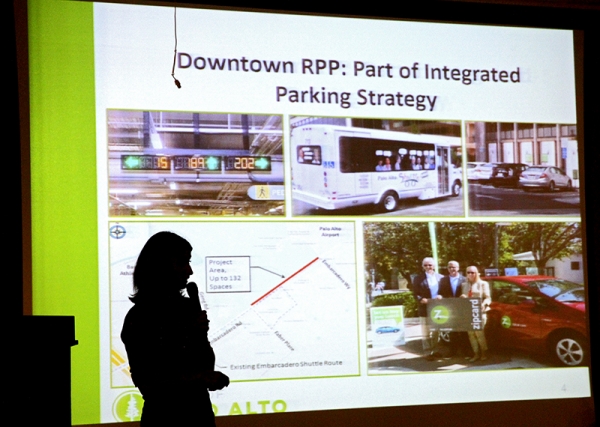
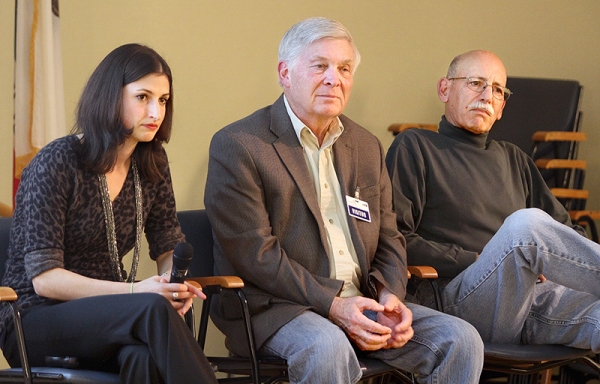
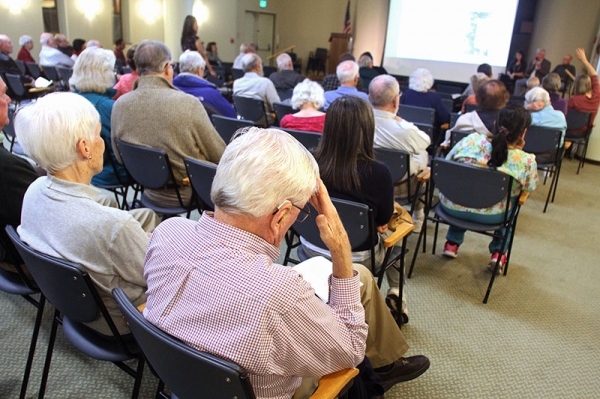
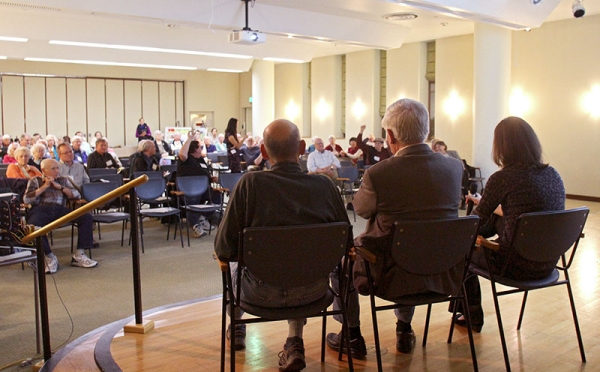
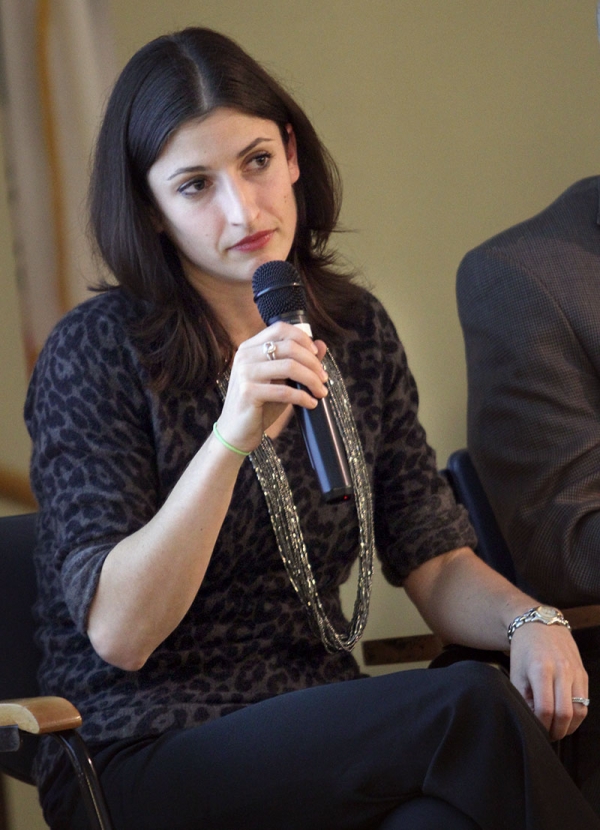
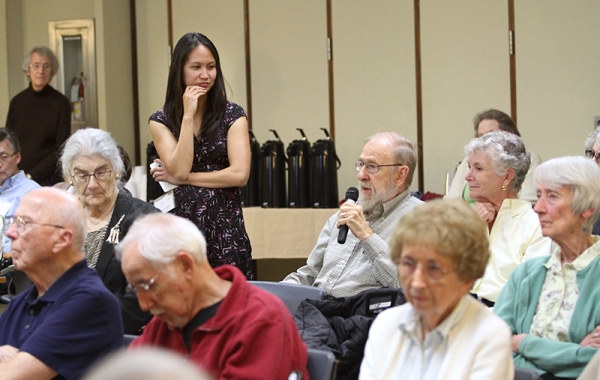
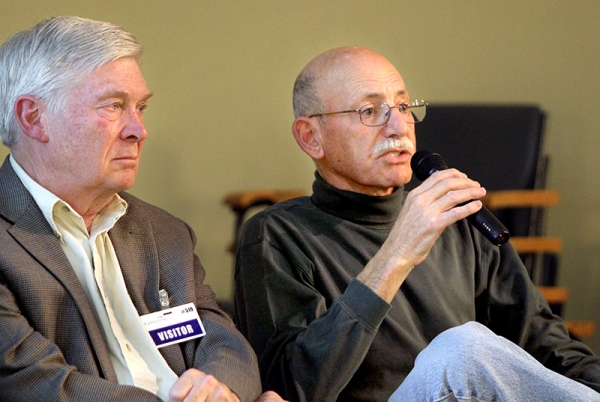
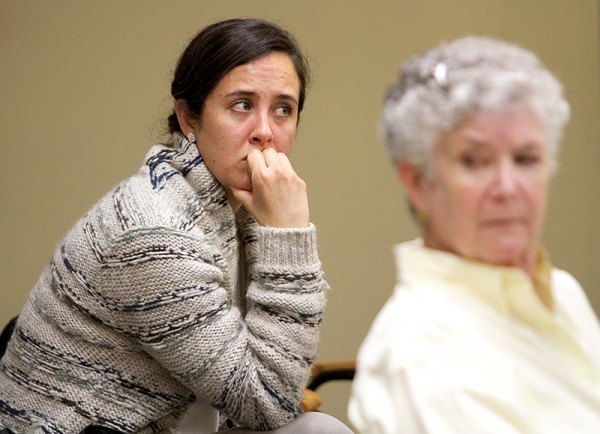
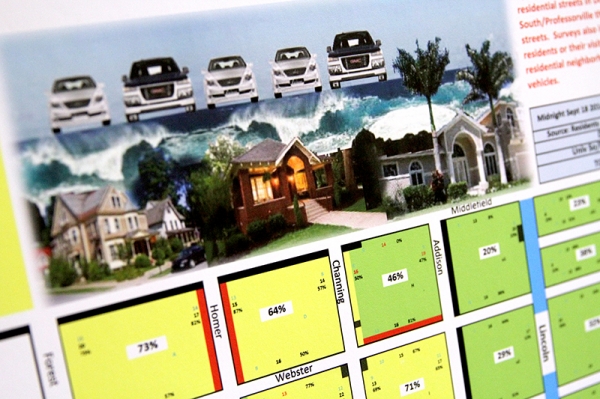
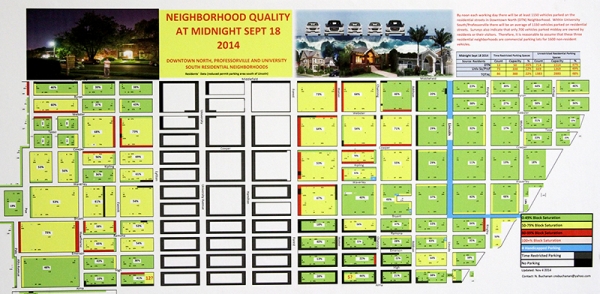
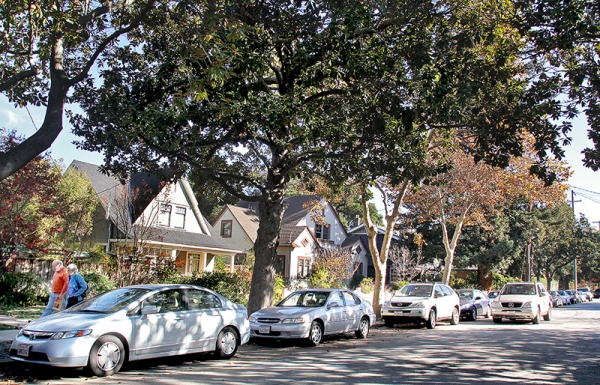
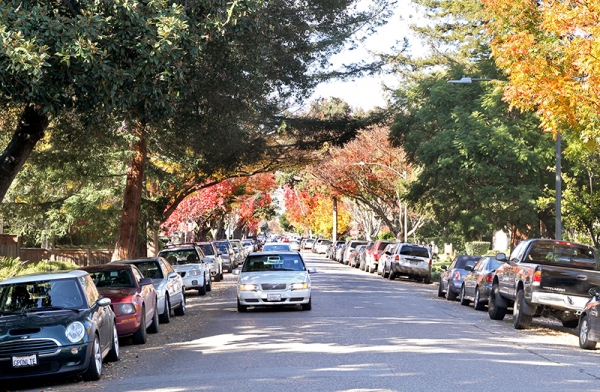
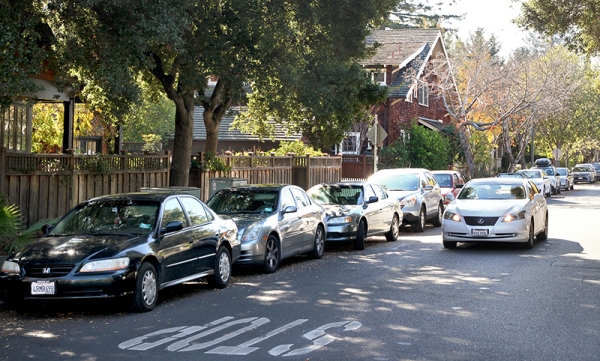
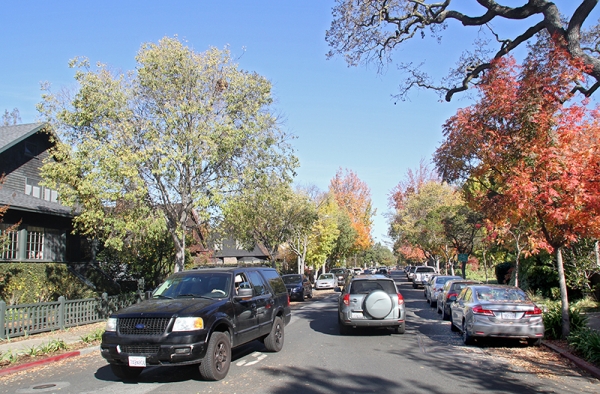


Comments
Embarcadero Oaks/Leland
on Nov 28, 2014 at 10:53 am
on Nov 28, 2014 at 10:53 am
I beg to differ with the following statement:
"You don't go somewhere to park your car; you go there because you want to be there, and large parking lots in an area reduce the desire to be there," Shoup writes.
For the last few years. my friends and I pick a restaurant specifically with a place to park our cars when a friend comes down to visit from Napa and needs to make her doctors' appointments on time.
We gave up on restaurants on Cal Ave and University specifically because we didn't want to waste half her visit circling blocks hoping to find parking.
And the city has been approving more and more under-parked buildings all these years! ABSURD.
Gunn High School
on Nov 28, 2014 at 11:42 am
on Nov 28, 2014 at 11:42 am
We need viable public transportation that reduces cars commuting on Alma St. to Palo Alto downtown. Solving the parking problem ahead of the arrival of cars at downtown would be more proactive than trying to solve the problem afterwards. Palo Alto city should work with neighboring cities to provide parking for commuters who are interested to take a bus which can provide more frequent schedule.
another community
on Nov 28, 2014 at 1:01 pm
on Nov 28, 2014 at 1:01 pm
@Jo Ann
Last time I checked University was pretty busy, I don't think there's a concern that people are avoiding the area due to a "parking shortage".
Another Palo Alto neighborhood
on Nov 28, 2014 at 1:04 pm
on Nov 28, 2014 at 1:04 pm
Assuming that these cars will go away and park with permits is not going to happen.
Provide pay per hour machines at all garages and lots, put up parking meters and see what happens. Annual or monthly permits do not work for occasional parkers, visitors or those who want to have lunch and see a movie.
College Terrace
on Nov 28, 2014 at 3:29 pm
on Nov 28, 2014 at 3:29 pm
It has been obvious to me, for quite some time, that a RPPP is needed throughout PA. It has worked well in College Terrace, and I am proud of our neighborhood for initiating it. Unfortunately, the neighborhoods which feel that they do not currently have a problem will fight it...until it, inevitably, shows up on their own streets.
I also like the idea of paid parking permits in PA city garages...and satellite parking lots, with shuttle buses. Also, CalTrain is a natural for public transportation to Downtown and California Ave. Dedicated bus lanes from Salinas and Tracy are also a good thing.
A really bad idea is to build even more subsidized housing is PA. The existing units are not proven to provide housing for essential PA workers (we're not even allowed to find out!).
RPPPs also inhibit car campers, which is what PA citizens want to achieve...even if our city council lacks the courage to enforce its own law. In fact, a city-wide RPPP would be a good political and legal cover for our CC.
RPPPs should be celebrated by Palo Alto citizens...because they work!
Crescent Park
on Nov 28, 2014 at 10:03 pm
on Nov 28, 2014 at 10:03 pm
Parking meters just puts me in mind of my hero Cool Hand Luke.
Such a stupid idea ... we already know giving the City Of Palo Alto more money does not provide better services of more value ... why now screw up something that is not broken?
Where do we vote on this?
Crescent Park
on Nov 29, 2014 at 5:49 pm
on Nov 29, 2014 at 5:49 pm
"Palo Alto installed 800 parking meters in 1947 but the City Council ordered them removed after the Stanford Shopping Center was expanded in the 1970s. As one of the first big malls on the West Coast, its abundant, free parking devastated retail stores on University Avenue." From Web Link
I think RPPP is a required step to create more efficient use of parking spaces in greater downtown. Per Donald Shoup, there is no free parking. In the long run, I favor pay-by-phone parking for on-street parking spaces for workers in greater downtown - much lower cost per space than adding parking meters: Web Link
Menlo Park
on Nov 30, 2014 at 9:22 pm
on Nov 30, 2014 at 9:22 pm
I'm puzzled by the comments that it's hard for shoppers to park downtown. I always just drive to a garage and I've never failed to find a parking spot. The city hall garage and the Cowper garage both routinely have easy spots to find. Everything on University is within a few blocks of one of those garages.
I do support a well-run RPP, though. Downtown residents have reasonable complaints, and this is the only way that will actually address them.
Crescent Park
on Nov 30, 2014 at 10:51 pm
on Nov 30, 2014 at 10:51 pm
"well-run" and Palo Alto City management are words that should never be considered together Bob.
Registered user
Downtown North
on Dec 1, 2014 at 5:45 am
Registered user
on Dec 1, 2014 at 5:45 am
Wow... great journalistic work by this paper. Solid summary of both the state of play in Palo Alto, and a good survey of relevant research on this topic. This goes in the "required reading" file for such an important issue.
University South
on Dec 1, 2014 at 6:24 am
on Dec 1, 2014 at 6:24 am
"...Palo Alto residents and workers say farewell to free parking."
Visitors still get 2 hours free parking M-F 8-5, then it's free for all after those hours.
College Terrace
on Dec 1, 2014 at 11:08 am
on Dec 1, 2014 at 11:08 am
After a decade of fight for it, College Terrace has now had a parking permit program for 5 years. We pay for it. It works. We're all use to the $40 per vehicle. The problem for us was Stanford and it's probably the problem for much of downtown. Stanford's counts on computers is not at all accurate since so many park on Palo Alto streets. If they used an honest count there would be less construction since cars in and out regulates building on campus. A parking permit should make life a bit more fair in the in the shadow of Stanford. I encourage the Council to move ahead a give the downtown residents their rightful spot on their street.
Midtown
on Dec 1, 2014 at 11:27 am
on Dec 1, 2014 at 11:27 am
I shop and also choose restaurants where part of the ambience includes reasonable parking -- enough places and places close enough to where I want to go. I prefer a quick trip to Redwood City or Menlo Park where things are easier, calmer and I can enjoy the outing. University Arts, Dragon Theatre made Palo Alto's downtown unique. There's not much unique about a Cheesecake Factory or Walgreen's or even Restoration Hardware.
If Palo Alto chooses to institute paid parking, then please choose the meters which take credit cards. And, for those residents who bewail the lack of parking in front of their homes, try cleaning out your garage/carport and parking there for a change!
Greenmeadow
on Dec 1, 2014 at 11:46 am
on Dec 1, 2014 at 11:46 am
It takes me 25 minutes to bicycle (at a VERY leisurely pace) from my home at the southern-most end of Palo Alto to University Avenue. It takes me the same amount of time to drive and park. My bike is well lit for safety at night, and I wear a helmet and abide by vehicle laws. It's a lovely ride on Bryant Street--completely flat, pretty, and easy route.
In the words of Ellen Fletcher who still bicycled while she was battling lung cancer in her nineties, "It's just not that hard."
We do, however, need more bicycle parking everywhere in town (north AND south).
Palo Verde
on Dec 1, 2014 at 11:58 am
on Dec 1, 2014 at 11:58 am
Why does a city with as many smart people as Palo Alto repeatedly embark on so many brain-dead misadventures? My wife and I restrict our biking to the baylands because we don’t wish to get killed biking on the public streets. But we love to walk. If pay parking is instituted we will simply find the edge park there then walk in, however far that may be. I guess we’ll get more exercise that way.
Duveneck/St. Francis
on Dec 1, 2014 at 12:12 pm
on Dec 1, 2014 at 12:12 pm
Can the parking meter advocates explain why they think meters would help? There are already time restrictions on parking. The main issue right now seems to be the influx of workers who need all day parking, and meters don't address that (unless you are proposing 8 hour meters).
Another Palo Alto neighborhood
on Dec 1, 2014 at 12:28 pm
on Dec 1, 2014 at 12:28 pm
I think meters would be a good idea. I think that street parking could still have the first 2 hours free, but make it much more expensive per hour after that than the garages. Make the garages cheaper places to park, easier to find a vacant spot and every garage and lot should have pay per hour machines. At present you can park all day in the Caltrain lot for $5, that should be the upper charge of all day parking in a garage, but make it double for street parking after two hours.
Meters are a lot smarter nowadays and being able to select the number of hours and pay by credit card can be done.
If Palo Alto really wants to revamp and get high tech with parking, then it has to look much further than just putting in parking permits in residential neighborhoods.
I visit friends who live in a downtown area in a similar sized town to Palo Alto, not in California. Many of the homes in the street have paved their front yards to accommodate parking. Our friends are allowed to buy up to 2 permits per address and have to register their license plates on the permit. When we visit, we park on their driveway and they put one of their cars in the street. This prevents them selling their permits, but they can sell a spot on their driveway and some neighbors do that for daytime workers.
There are a lot of aspects to downtown parking in any vibrant area. What we have now is very much behind the times.
Duveneck/St. Francis
on Dec 1, 2014 at 1:02 pm
on Dec 1, 2014 at 1:02 pm
@Resident - If you let people pay to park at meters all day, then that's where office workers will park, all day. That's going to further kill retail downtown. You want downtown spaces available and turning over so shoppers can come.
Another Palo Alto neighborhood
on Dec 1, 2014 at 1:12 pm
on Dec 1, 2014 at 1:12 pm
Mr Recycle
I think two hour limits outside stores would be the most practical. I am thinking more about meters in the residential areas of downtown.
As I said, the prices after two hours should be more expensive than the garages so that workers would use the cheaper option. The meters in residential streets would enable people to park there if they don't like garages, or the residents can buy a permit to allow them to park there, but not to sell their permit as they would need to be registered to their plates.
I think that just putting up permits all over the downtown residential area is a bad idea unless there is better parking in the business area. At present it is difficult for an occasional all day parker to find a place to pay to park all day unless they are "in the know".
The signs in lots saying buy an all day permit in City Hall does not help someone who is planning to come for lunch and a movie or shop, or have a business meeting and lunch, or just wants to spend more than 2 or 3 hours, unless they are in the know beforehand.
My idea may or may not work without some tweaks, but it is outside the box thinking and being innovative with some ideas and throwing them around might just be a lot better than what the council is talking about at present.
Downtown North
on Dec 1, 2014 at 1:55 pm
on Dec 1, 2014 at 1:55 pm
The city's survey was so complex that I could not figure out how to answer it. Answers depended on knowing a whole lot of complex data.
The city should never refer to that dishonest, amateurish effort and just admit they were looking for a negative response.
This is only one of many things the city is doing to put roadblocks in the way of this idea. Including changing the name of the project to make it look undesirable.
Duveneck/St. Francis
on Dec 1, 2014 at 2:17 pm
on Dec 1, 2014 at 2:17 pm
Over the couple hundreds of times I've been to Downtown Palo Alto, I've maybe had trouble finding parking in one of the downtown lots at most 2 or 3 times. In fact, it's always been a breeze compared to parking in Downtown San Mateo, Berkeley, or pretty much anywhere in San Francisco.
Parking meters are annoying and stressful, and would strongly discourage me from frequenting Downtown Palo Alto for short errands (e.g. grabbing some pastries at La Boulange or macarons at Chantal Guillon).
Professorville
on Dec 1, 2014 at 3:23 pm
on Dec 1, 2014 at 3:23 pm
>> "The city's survey was so complex that I could not figure out how to answer it."
@Resident Too
The survey wasn't great. However, it definitely wasn't too complex. It described the program, and then asked a simple question: "are you in favor of this program"?
I think that there were only 3 questions to the survey. You could argue that an RPP program is too complicated to be understood or voted on, but that is a separate issue. A small group of people are claiming that EVERYONE wants a managed parking program. When the voting doesn't turn out the way they expected, their reaction is "flawed survey"! Too complex!
@Paly Grad
Yes, probably a lot of people feel as you do. However, others would be happy to find even more convenient parking places (if the folks that don't want to pay a dollar for parking are staying away). My guess is that there will be almost as many people downtown-- however, the people who didn't come before because they were worried about parking availability will come, while the people who only wanted free parking won't come. My guess is that a business owner wants more people who are willing to pay a few bucks for parking. It's time vs. money. Parking meters should save time (because there should be more free spaces), but cost a bit of money. Other people value their time very little, but are willing to drive around and around for a free space.
Old Palo Alto
on Dec 1, 2014 at 4:40 pm
on Dec 1, 2014 at 4:40 pm
[Post removed.]
Another Palo Alto neighborhood
on Dec 1, 2014 at 5:00 pm
on Dec 1, 2014 at 5:00 pm
Based on the vote, there is no,parking crisis. No clear cut demand for this solution. Even when the city gerrymandered the voting area and threw out votes ( democracy in action in Palo Alto), the demand is not as overwhelming as people claim it is.
Of course, this will stop the council or the weekly frm claiming it is a pressing issue that needs to be addressed ASAP. As usual a very vocal minority will pressure the council into doing their bidding.
Then the council an move on to the really pressing issues- fixing the council chambers, installing art work and playing nanny state by banning e- cigarettes.
University South
on Dec 1, 2014 at 6:20 pm
on Dec 1, 2014 at 6:20 pm
OK, so some residents in the Downtown North and Professorsville neighborhoods recently decided to complain about street parking. As I understand it, their beef was that were not always able to park in front of their homes. And this is something new? Parking has been tight downtown for over twenty years now, so why is it suddenly a crisis? An asteroid striking the Earth and wiping out all life is a crisis. Downtown parking? Not a crisis.
The source of the problem was identified as downtown employees parking on the street, hogging the precious parking spots in the process. The proposed solution was to have permit parking downtown, with permits issued to residents only. Somehow this morphed into permits for residents AND for downtown employees, with employees paying substantially more than residents. So nothing changes except the city is now collecting $$$. The parking permit process is really nothing more than a new tax.
"Shopkeepers are scared, but it makes revenue for businesses,"
As we all know, driving customers away is very good for business and greatly increases revenue. ;-) Now if an asteroid would only strike the Earth, they would all be fabulously wealthy.
University South
on Dec 1, 2014 at 6:25 pm
on Dec 1, 2014 at 6:25 pm
@Bob wrote: "I do support a well-run RPP, though. Downtown residents have reasonable complaints, and this is the only way that will actually address them."
No, it is not the only way. Requiring downtown employees to park in the garages would free up a great deal of parking on the street. Give them a flat monthly permit price to simplify things. It would also negate the need to have a permit system (aka parking tax).
Old Palo Alto
on Dec 1, 2014 at 8:56 pm
on Dec 1, 2014 at 8:56 pm
Another bizarre idea put forth by City Manager Keene.....
Duveneck/St. Francis
on Dec 1, 2014 at 9:08 pm
on Dec 1, 2014 at 9:08 pm
@Jordan - come on, you can't say parking isn't worse than it was 20 years ago, there are more, larger buildings, crammed with tech workers, and scores of retail spots that have been converted and packed with people. Plus PAMF expansion, plus Stanford expansions. Urbanist have their weird arguments about how stuffing downtown makes it better, but it is just dishonest to deny that it is happening. The problem has been obvious, and growing for a long time.
Downtown North
on Dec 2, 2014 at 1:39 pm
on Dec 2, 2014 at 1:39 pm
My fear is by adding parking permits you will just push the downtown parking area further down the street. I live downtown and do have a driveway but I really don't want to pay for parking permits for my friends to come visit. Lets leave things the way they are.
Duveneck/St. Francis
on Dec 2, 2014 at 4:06 pm
on Dec 2, 2014 at 4:06 pm
@high demand - So your neighbors are suffering, and you want it to stay the same because you don't want to be bothered with a parking permit? That's not very generous. You get a free permit to start with, and $50 for a second seems reasonable. Would you be ok with a $20 second permit? $5?
University South
on Dec 2, 2014 at 7:40 pm
on Dec 2, 2014 at 7:40 pm
@Mr.Recycle, downtown parking isn't any worse than it was 20 years ago, or even 25 years ago. That is reality, like it or not. Parking is worse than it was 35 years ago, and much worse than it was 40 years ago. There are not any more buildings than there were 20 years ago, but many of the buildings have been replace with taller equivalents. There have also been parking garages built in downtown that provide plenty of parking.
The stated concern is downtown employees parking on the street. From the article in the Palo Alto Daily News (Web Link
"Resident stakeholders felt that the level of employee parking within the neighborhoods had become untenable," the report said, "while business leaders, although understanding of the resident point of view, were concerned that employees still needed somewhere to park."
So if the problem is downtown employees parking on the street, why not simply require them to park in the city garages instead of on the street? Problem solved. Requiring anyone else to purchase permits is pointless, so why make them do so?
I am not sure what you mean by "stuffing downtown". Rest assured I do not propose stuffing downtown anywhere, as doing so would be both immodest and impractical. And if you think Urbanists have weird arguments, you should listen to the Residentialist chatter. Since when was the stick-your-head-in-the-sand approach anything but counterproductive? The population of the Bay Area, Palo Alto included, is increasing. We can plan for new development and increased population or be caught off guard and scramble to implement half-baked solutions. The permit program falls squarely within the half-baked category. Surprise, surprise, we live in an urban area, not out in the sticks.
University South
on Dec 2, 2014 at 7:56 pm
on Dec 2, 2014 at 7:56 pm
@Mr.Recycle, how can you call @high demand's stance insensitive? The permits won't change a thing parking-wise. It will be the same parking situation, only now with fees. Do you seriously believe that @high demand's friends are the source of the problems?
Mountain View
on Dec 3, 2014 at 8:37 am
on Dec 3, 2014 at 8:37 am
I thought this article did a great job explaining why free parking isn't really free. It has costs and it has a limited supply. Setting the price of that limited resource to free is actually a distortion of the market, even though that seems counter intuitive to those of us who are used to it.
Here's another tool Palo Alto could employ to fix their parking woes: build more housing! Palo Alto has the worst jobs-to-employed-residents ratios in the region. That means workers and shoppers have to drive into town from far away and park. If more people could live near downtown, they could walk or bike to work or shops. Some of them would even choose not to own a car.
Downtown North
on Dec 3, 2014 at 9:32 am
on Dec 3, 2014 at 9:32 am
Please tell me where to find a succinct description of the parking proposal that covers homeowners,renters, workers,visitors and shoppers.
Duveneck/St. Francis
on Dec 3, 2014 at 11:00 am
on Dec 3, 2014 at 11:00 am
@Jordan - Telling your neighbor they can't have a parking permit because you personally don't have a problem is classic head in the sand, and selfish.
Registered user
Downtown North
on Mar 26, 2015 at 2:31 pm
Registered user
on Mar 26, 2015 at 2:31 pm
Judy Kleinberg said recently that "corporations are people too" if that helps explain her stance here. She was speaking of the German software giant SAP (market cap $18B) which is now also a tenant on University, running the cafe in The Varsity. So I guess she is saying that their $200K managers and their subtenant $10/hr baristas or billionaire CEO Hasso Plattner all deserve the right to park in front of the houses of Mr. Rosenblum, Mr. Filseth and Mr. Buchanon for the near future if not forever. She probably thinks that in the case of Rosenblum he has double rights, as a homeowner and corporate equity holder, although not on his own street.
Oligarchy, not a Democracy.
Didn't you get the memo?
Downtown North
on Mar 26, 2015 at 2:52 pm
on Mar 26, 2015 at 2:52 pm
Weiss
Those $200K managers and billionaire CEO Hasso Plattner don't park anywhere. Their minimum wage chauffeurs do their parking.